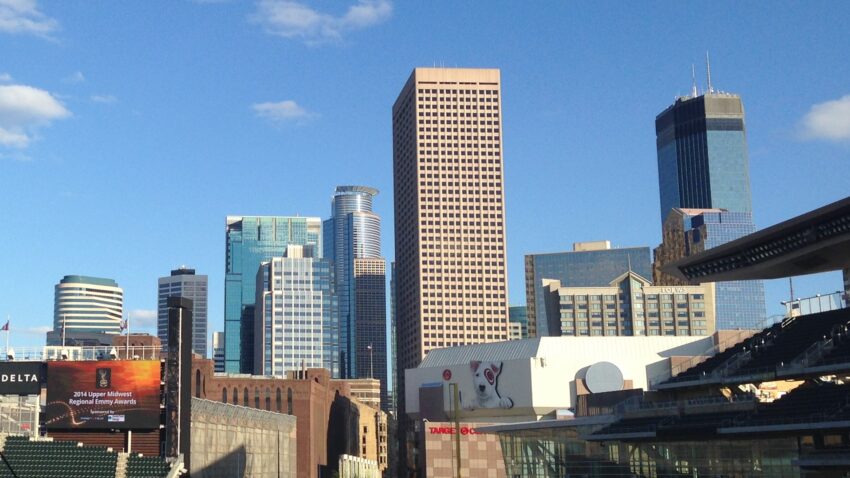One of the interesting quirks about radio and TV station licensing is that sometimes, the community of license isn’t real.
By that I mean that the community specified on the official station license doesn’t actually exist as a government entity, sometimes because it’s unincorporated. I mentioned this briefly in an earlier post about the smallest communities of license in the Upper Midwest.
In other cases, multiple incorporated places are mashed into one community name on FCC licenses. While rare, there are at least a half-dozen cases of this happening in the Upper Midwest.
Minnesota Public Radio’s KNOW-FM/91.1 is officially licensed to “Minneapolis-St. Paul,” though the cities are obviously separate entities. A little-known fact is that the station was actually licensed to New Brighton when it first signed on in 1968 as KSJN, according to FCC history cards. It changed its community of license to Minneapolis-St. Paul when it moved to the new Telefarm tower site in Shoreview a few years later and became KNOW-FM when the KSJN callsign was moved to 99.5 in 1991.
While most other Twin Cities stations include both Minneapolis and St. Paul in their legal ID’s, KNOW-FM is the only one officially licensed to both. A piece of trivia sure to make you popular at your next party.
MPR has two other stations with hyphenated communities of license: WIRR/90.9 has been licensed to “Virginia-Hibbing” since it signed on in 1985. KNSW/91.7 is licensed to “Worthington-Marshall” and has a longer history. Originally KRSW-FM, the station was licensed to Pipestone when it signed on in 1973, changed its community of license to Worthington-Marshall in 1979 as part of a studio move, and swapped callsigns with KNSW/89.3 (Worthington) in 1994.
Then there’s the case of “Neenah-Menasha” in northeastern Wisconsin. Though the two places are separate incorporated cities, the merged name is the community of license for three commercial radio stations: Cumulus Media’s WNAM/1280 and Midwest’s WYDR/94.3 and WNCY-FM/100.3. WNAM was originally licensed to Neenah when it signed on in 1946 but got approval to change it to Neenah-Menasha in 1961. FCC history cards show the stations that are now WYDR and WNCY-FM have been licensed to Neenah-Menasha since they signed in in the early 1970s, though each has changed its frequency and callsign.
Don’t mistake this for stations that choose to include multiple cities in their ID. Stations can say whatever they want as long as the community of license comes first. This is the standard practice for most stations licensed to suburban communities.
(For those who aren’t ID nerds, a legal ID consists of the callsign immediately followed by the community of license. Stations can also choose to put their frequency and/or licensee name in between the callsign and community of license.)
My favorite voluntary elongated legal ID was from KUNI/90.9 (Cedar Falls) before the formation of Iowa Public Radio:
All of those extra cities after Cedar Falls are not officially part of KUNI’s license. (And they really should have included the frequencies for KRNI and KUNY in order to make it a totally legal ID, but that’s a different, even nerdier, story.)

